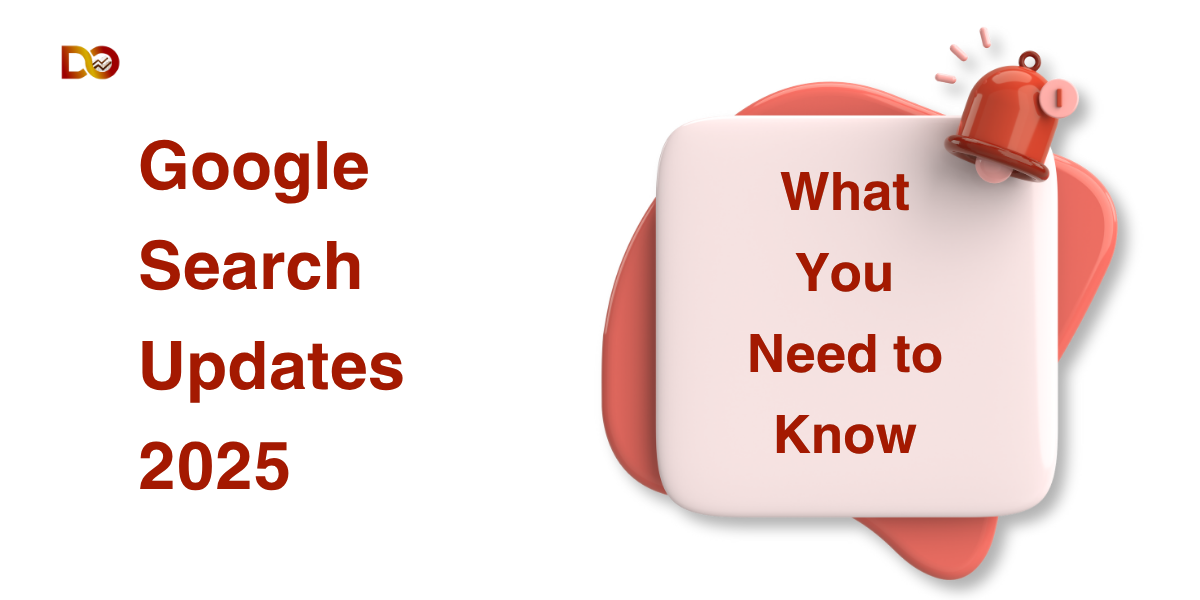In the first half of 2025, Google introduced several meaningful changes to how Search interprets, displays, and interacts with websites—spanning structured data adjustments, AI-powered crawling controls, loyalty program support, detailed analytics, and policy enhancements. These updates reflect Google’s broader mission to refine the Search experience for both users and site owners by balancing transparency, control, and smarter indexing.
Whether you’re a site administrator or digital strategist, understanding these updates is essential for aligning your web presence with Google’s evolving standards. This article explores the most significant Google Search updates rolled out between March and June 2025. It focuses on six key areas that shape how websites are discovered and ranked in the next-gen Search environment:
Let’s dive into what each of these updates means and how they impact your digital strategy going forward.
- Controlling AI Overview: The “AI Mode” Robots Meta Directive (March 5, 2025)
What Changed?
Google integrated an “AI” directive into its robots meta tag specifications as part of its expanding Search Labs initiative.This allows site owners to fine-tune whether Google’s AI-generated summaries should consider their pages—also known as “AI Mode“.
Strategic Significance
As AI-driven tools become more embedded in Search, Google is giving publishers a precise mechanism to manage their AI visibility. Previously, publishers could only rely on broader tags like noindex or max-snippet. Now, using <meta name=”googlebot” content=”noai”> (or equivalent via X-Robots-Tag) enables explicit control over AI-based inclusion.
Expert Insight
This is a logical step toward transparency and granularity, particularly as AI interplay grows in Search. It empowers publishers—especially those in regulated industries like finance or healthcare—to decide whether to allow AI narratives about their content. While the use of the tag is optional, it’s a crucial tool for preserving brand voice and editorial control within generative AI contexts.
- Structured Data Retirements & Deprecations
Google’s Efforts to Simplify Search Results(June 12, 2025)
What Changed?
Google published a formatted notification, detailing the phase-out of seven less-utilized structured data types. These include:
- Book Actions
- Course Info
- ClaimReview
- Estimated Salary
- Learning Video
- Special Announcement
- Vehicle Listing
Strategic Significance
These formats “are not commonly used in Search” and don’t provide meaningful UX enhancing, prompting a move to simplify search result presentations. Visual indicators tied to these markups will no longer appear—but affected pages retain their traditional ranking signals.
Expert Insight
Webmasters should audit the use of these markups. Removing deprecated schema avoids unnecessary crawling overhead and ensures markup remains aligned with features still supported by Google.
- Loyalty Program Structured Data Support (June 10, 2025)
What Changed?
Google expanded its structured data schema to allow the embedding of loyalty program information (via MemberProgram) under Organization, along with perks like points, pricing, shipping, or return benefits under Product. This feature goes live on June 10, 2025, and is extensively documented in Google’s official “Loyalty Program Structured Data” guide. Loyalty program (MemberProgram) structured data
Strategic Significance
Google states that “member benefits, such as lower prices and earning loyalty points, are a major factor considered by shoppers.”Adding markup support for loyalty programs. If implemented correctly, these benefits now appear in product search results—emphasizing value and incentivizing loyalty.
Expert Insight
- Inclusivity: This markup is available even to businesses without Merchant Center accounts.
- Tier support: Multiple tiers (e.g., “Silver,” “Gold”) can be defined, each detailing benefits and access requirements like spend thresholds or subscription fees.
- Validation & Priority: Google recommends validating implementation via the Rich Results Test, and notes that Merchant Center settings will override schema where used
Practical Steps
- Add MemberProgram in the Organization schema with name, description, and tiers.
- Apply tier benefits (TierBenefitLoyaltyPoints, etc.) in product-level markup.
- Validate in Rich Results Test.
- Monitor visibility/performance in Search Console after launch.
- Rich Monitoring: Hourly Search Console Data via API (April 2025)
What Changed?
In April, Google significantly enhanced the Search Analysis API with support for hourly-level performance data, available back to the previous ten days. This includes a new HOUR dimension and HOURLY_ALL state.
Strategic Significance
Previously, the Search Console UI only displayed hourly data for the past 24 hours. The expanded API benefit:
- Supports the creation of automated hourly dashboards
- Enables anomaly alerts (e.g., midday ranking drops)
- Aids publishers monitoring new content launches and time-sensitive campaigns.
Expert Insight
SEO and analytics teams building their tools now gain granularity once impossible without manual workarounds. This fosters proactive site monitoring and optimized content refresh strategies.
- App Deep Links: Improved Mobile Integration (May 2025)
What Changed?
Google reissued guidance on app deep linking, emphasizing best practices for ensuring search results open directly in-app for users who have it installed—without hurting web discovery. This signifies that Search continues to index web content, and adding deep links doesn’t change that—but enhances navigation.
Strategic Significance
With mobile app usage outpacing browser access in some categories (e.g., retail, travel), an optimized deep linking experience adds user convenience.
Expert Insight
Handling both web and app presence is vital. Publishers should:
- Implement App Links (Android) and Universal Links (iOS) matching page content.
- Consistently align titles/snippets to avoid misleading users.
- Monitor Search Console app link performance to troubleshoot coverage or drop-offs.
- SafeSearch & Explicit Content Compliance Enhancements (June 4, 2025)
What Changed?
Google overhauled its documentation on SafeSearch compliance, with key additions:
- New best practices for moderating user-generated and video content
- Troubleshooting guidance for sites misclassified as explicit
- A major algorithmic consequence: if a site hosts explicit videos but blocks them from Googlebot (e.g., via robots.txt), it may suffer significant ranking penalties—especially in Video search.
Strategic Significance
This update reinforces Google’s commitment to safety and explicit content accuracy. Allowing explicit videos to block crawlers undermines SafeSearch and may result in demotions.
Expert Insight
Media portals and platforms should:
- Ensure explicit video URLs are crawlable by Googlebot
- Use troubleshooting guides to address misclassification issues.
Why These Updates Matter
Taken together, the updates offer a coherent message:
- AI-Control & Visibility: Publishers gain precise control over AI modes.
- Search Simplification: Google is pruning lesser-used structured data types and annotation options.
- Rich Commerce Signals: Loyalty program schema adds flexible e-commerce controls.
- Granular Analytics: Hourly data in APIs empowers time-sensitive site monitoring.
- Enhanced Mobile UX: Deep link support bridges web and app experiences.
- Content Safety Enforcement: SafeSearch guidelines now tie explicit content visibility to crawler access.
Final Thoughts
From March through June 2025, Google rolled out a wave of updates that reflect a strategic balance between streamlining—by phasing out selected structured data types—and advancing innovation, with initiatives such as expanded support for loyalty program markup, enhanced AI control mechanisms, and updated video content policies. These developments send a clear message to web developers and site managers: keeping pace with evolving structured data standards, crawling directives, and content guidelines isn’t merely best practice—it’s a foundational requirement for maintaining visibility and relevance in today’s dynamic search ecosystem.
Staying informed via Google’s official Search Central blog and docs is crucial. These updates are not simply technical footnotes—they shape how content is discovered, displayed, and consumed by users.
By proactively adapting, you ensure your site will not only remain visible but also stand out in next-gen Search environments!







